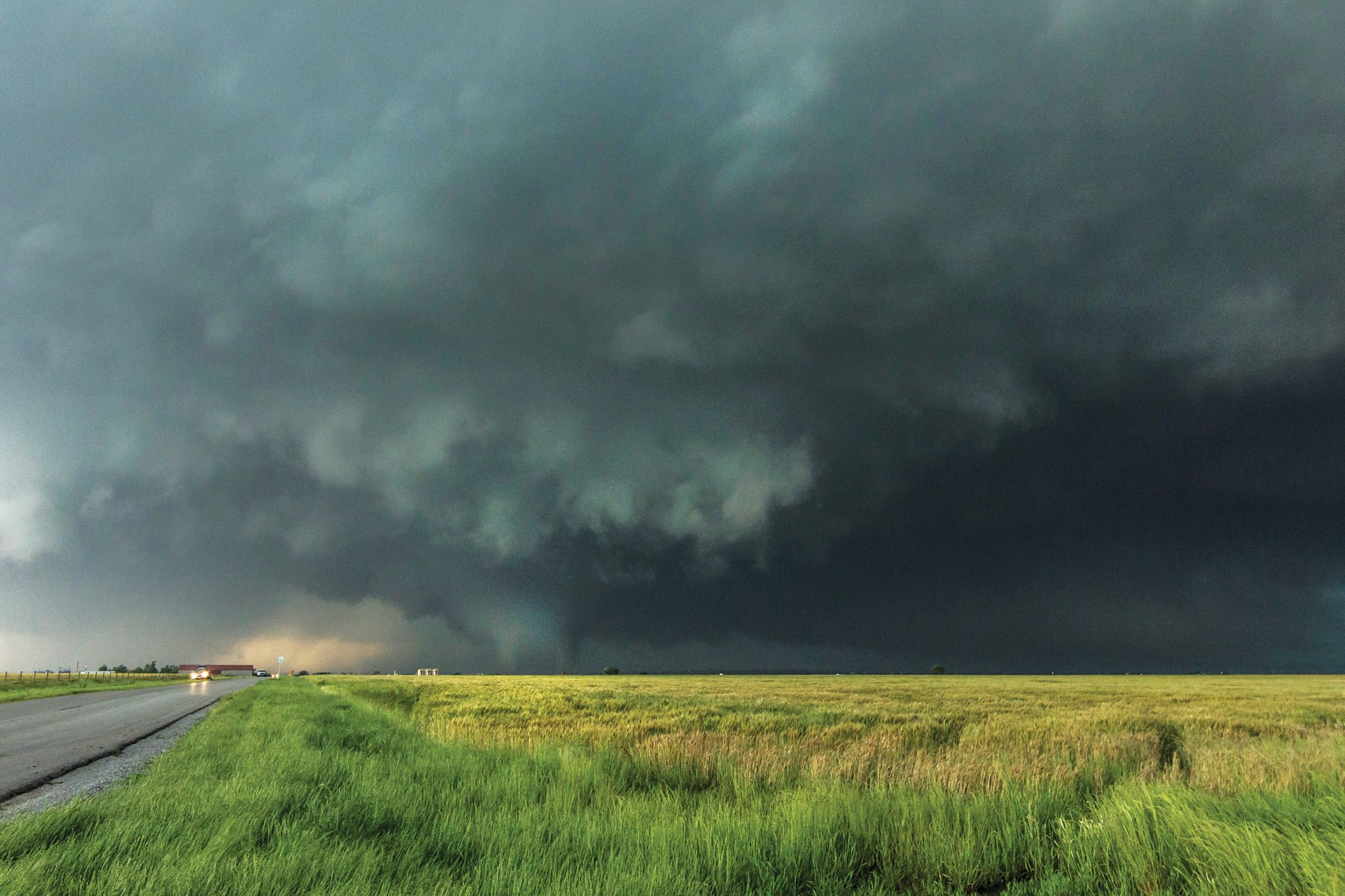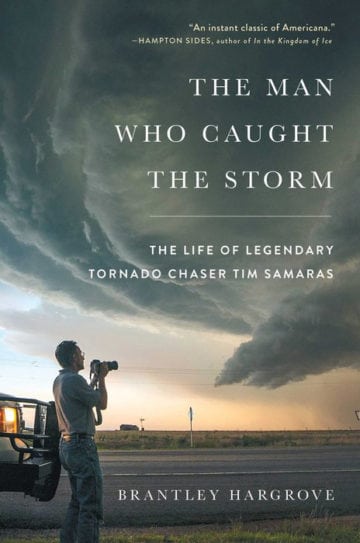
Chasing Tornadoes and Drama in ‘The Man Who Caught the Storm’
Dallas author Brantley Hargrove’s new biography of storm chaser Tim Samaras is a streamlined primer in tornado science — and a hell of a story.

A version of this story ran in the June 2018 issue.
Above: This tornado outside El Reno, Oklahoma, took Tim Samaras’ life on May 31, 2013.
At least he died doing what he loved. Brantley Hargrove doesn’t write a single sentence so crassly clichéd in The Man Who Caught the Storm. (He also doesn’t once describe a tornado as sounding “like a train,” for which he richly deserves writerly admiration.) But he doesn’t have to. A famous tornado chaser finally caught one, and it killed him. If you’ve read the book’s title and consider this a spoiler, sorry. But even if Hargrove doesn’t say so, it’s hard not to pause and wonder at the weirdly specific symmetry of a life that ends in the very pursuit that animated it. The tragedy and majesty of that. It was doubtless an unpleasant way to go, as they all are, but it sure does resonate. How many people will get a chance like that?
The ending may be a giveaway, and if Dallas journalist Hargrove nonetheless doesn’t stint on plot in this, his first book, it’s clear that his real quarry is character. He’s got an exceedingly curious case in Tim Samaras, a not overtly dramatic (and so not easy to dramatize) man whose identity over time became subtly and seemingly rationally enmeshed with one of the most dramatic avocations imaginable: getting really close to killing weather.

By Brantley Hargrove
Simon & Schuster
$26; 295 pages
Perhaps appropriately, Samaras came to tornado-chasing sideways. He wasn’t a meteorologist. He never went to college. He was a childhood tinkerer with a mechanical mind and a knack for innovative angles who parlayed a handwritten résumé and informed curiosity into a job measuring the destructive force of military explosives, through which he got both Pentagon security clearance and the opportunity to invent and deploy highly specialized sensors. He got turned on to tornadoes in 1985, when he was 28, by a “Tornado!” episode of NOVA.
The parallels between explosions and tornadoes were obvious, and tornado science was fledgling, stymied by the fact that nothing that could take measurements had ever been inside of one.
Samaras started chasing tornadoes methodically, teaching himself to read the weather. Drives to the edge of his Colorado town became drives far onto the plains where tornadoes congregate. A standard sedan became a custom-built stormchaser bristling with specialized equipment. He invented a device he called a “turtle,” designed to be planted in the path of a tornado and take measurements from the source. In 2003, he succeeded in getting one in an F4 tornado in Manchester, South Dakota, yielding groundbreaking measurements. By 2004 he was featured in National Geographic. By 2009 he was starring in the Discovery Channel series Storm Chasers.
Hargrove is economical but thorough in documenting Samaras’ rise in the ranks of tornado researchers, surmounting and succumbing to barriers and engaging rivalries. The material yields insights into Samaras — whom Hargrove never met — that show a man who, faced with an insular scientific community, developed a healthy dose of competitive spirit, a hardened trust in his own self-educated intuition and a reasonable-seeming bit of a chip on his shoulder.
It’s the moments when monsters coalesce from the ether that both Hargrove and Samaras live for.
But Hargrove’s most dramatic writing, inevitably, occurs in close proximity to tornadoes. The cabs of those storm-chasers were well stocked with recording devices and cameras and phones. Hargrove had access to this archive and took up storm-chasing himself in the reporting of the book (though readers learn this only in an author’s note). Those tools allow him to re-create the chases with a fulsome sense of the frequent boredom and occasional immediacy, urgency and adrenaline that such an endeavor entails, conveyed in prose that flirts with poetry without ever turning purple.
Of one encounter, Hargrove writes:
As they pass into the shadow of this new storm’s anvil, the cab is filled with the vicious, singing hiss of wind-driven rain against glass. The sunset’s warm apricot glow is replaced by dusk, the ambient light filtering through the clouds now sourceless and cool. The minivan approaches a low rise and a copse of cottonwoods, beyond which they are driving into the blind. As they pass beyond the trees and onto the table-flat tracts of soybeans and corn, the rain slackens, the sight lines clear, and the occupants of the minivan fall momentarily silent. The rain-soaked windshield is a phantasmagoria of liquid shapes, but there is no mistaking the profile before them.
The view Hargrove provides is as close as most people will ever want to get.
Hargrove’s book offers a full-enough biography of Samaras, a married family man with four children‚ including a son by a previous relationship whom he met only seven years before his death. Another son followed him into the storm-chasing business as a photographer, and died in the 2013 twister that also claimed Samaras and meteorologist Carl Young.
The book also offers a streamlined primer in tornado science, historical and in the making. But it’s the moments when monsters coalesce from the ether that both Hargrove and Samaras live for.
“Obsession” is a word that any story about a man driven to his own death has to deal with. But by all accounts Samaras was a careful and cautious storm chaser, motivated not by fame or danger, but by the opportunity to crack the tornadic code and give scientists the tools to warn communities that find themselves in the path of the most densely destructive and fickly unpredictable weather pattern on the planet.
To do that, of course, he had to put himself in that same path, deploy probes and get out alive. He was a pioneer in that pursuit, and his work left a legacy for a new generation of storm scientists to build on.
But in spring 2013, when a 2.6-mile-wide twister — the widest ever recorded — caught up with his small team near El Reno, Oklahoma, Samaras lodged his final first, becoming the first storm chaser known to be killed by a tornado.
The confluence of factors that created that grisly denouement was too complex to boil down to anything as straightforward as a cautionary tale, and too tragic to cheapen with melodrama. But it makes for a hell of a story, and Hargrove has gotten as close as anyone could hope to its core.


